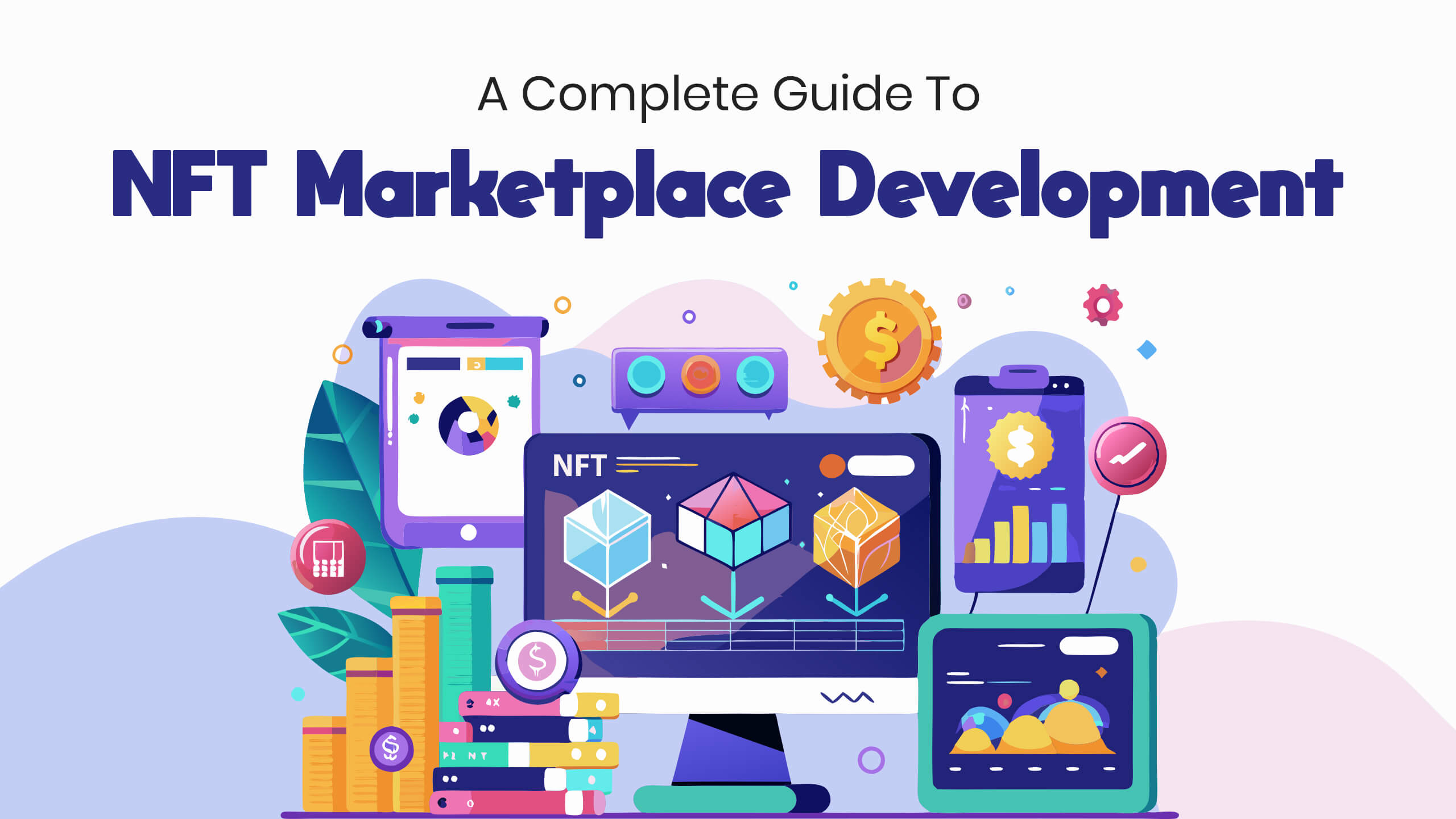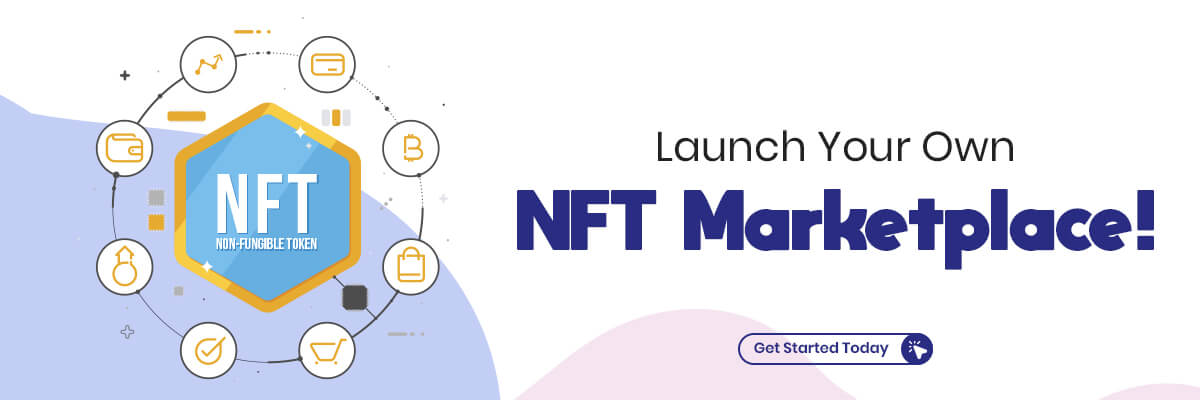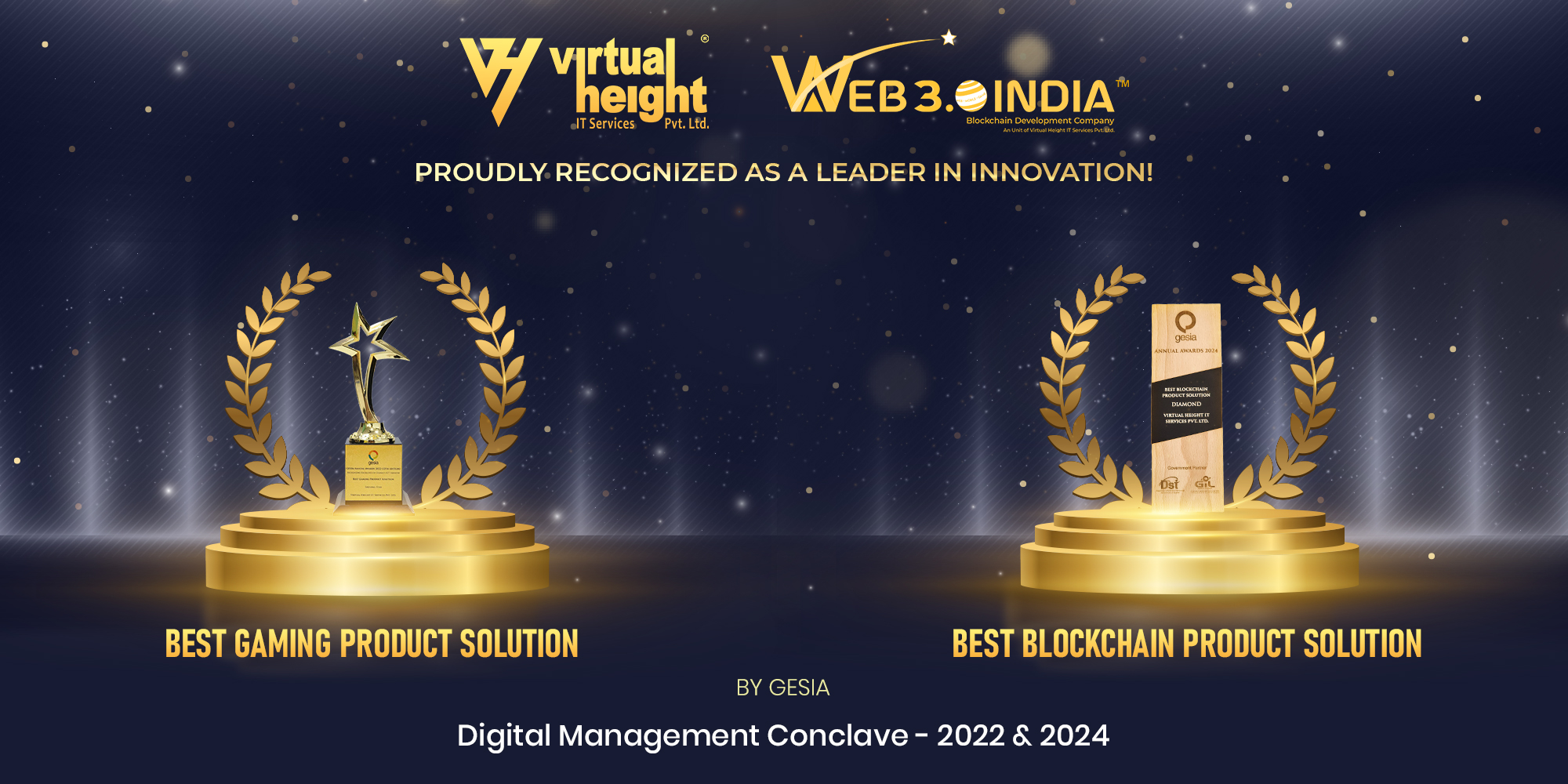With the increasing popularity of blockchain technology, the need to have an advanced and highly secured online marketplace for trading and storing crypto tokens or cryptocurrencies has skyrocketed by several notches. While there are several such marketplaces already available for the end users, most of them either are incompatible with NFTs or limit the operations that can be performed on these tokens. That’s why having an exclusive platform for trading and storing NFTs or non-fungible tokens is necessary, especially for investors who like to deal with these entities.
However, developing an NFT marketplace is much easier said than done. It will not only require extensive planning and correct project scoping but also a piece of in-depth knowledge about the platform’s workings and the key features to include. Since non-fungible tokens are still in their novice stages with only a handful of professionals having the necessary tech expertise, it will be difficult to proceed with the project free of any hiccup. With this being said, we have curated a detailed and comprehensive guide on NFT marketplace development so that you can have strong domain knowledge before embarking on this endeavor.
Introducing NFT Marketplace: What Is It?
NFTs or non-fungible tokens represent ownership of any digital entity or a real-world asset, like real estate property, digital art, or company stocks. These have unique identities and cannot be replicated or duplicated by any means. In other words, you won’t be able to transform the NFT from one form to another, like traditional fungible tokens or currencies. NFTs are deployed on the blockchain, thereby ensuring better security and authenticity of the ownership.
Now, an NFT marketplace is a platform that allows users to trade, sell, create, or buy NFTs using different blockchain ledgers. You can consider it to be a global platform where users can interact directly with the decentralized finance ecosystem and leverage the market prices for various operations related to the non-fungible tokens.
How Does an NFT Marketplace Work?
Smart contracts lay the cornerstone for the NFT marketplace. These are self-executable programs that complete a series of operations once the pre-defined conditions are satisfied completely. Since these can be executed by themselves, there is no need for manual intervention in activities like transaction validity, user identity authentication, buying or selling of NFTs, and many more. Usually, smart contracts contain cryptographic information about the NFTs and ownership, each being unique and authentic. Since these are deployed on the blockchain, the details stored in the contracts cannot be altered or manipulated by any means.
To understand further how smart contracts form the building block of an NFT marketplace, let’s assume a scenario. When a seller wants to sell NFTs, he will raise a request with all the necessary details. An interested buyer will then accept the request and initiate a transaction using cryptocurrencies based on the market valuation of the tokens. The smart contract will then evaluate all the conditions, and once they match the given transaction details, the trade will be executed and completed henceforth.
What Are the Key Features to Develop for an NFT Marketplace?
1. Storefront
Acting as the main dashboard, the storefront provides users with detailed and accurate information about different NFTs. Everything can be viewed from the storefront, from showing the available NFTs in the market to the details of asset ownership. Additionally, users can trace their transactions on this centralized dashboard, thereby giving them more visibility and transparency.
2. Advanced Token Search
One of the key features of an NFT marketplace that you cannot miss when including it in your development plan is the advanced token search engine. Just by adding a few filters, you will allow users to search for the available NFTs in the decentralized finance ecosystem that meet their preferences. Here, the advanced token search module will classify the tokens based on the assets they represent in the real or virtual world.
3. NFT Rankings
Since there are multifarious non-fungible tokens available in the decentralized ecosystem, the marketplace platform should be developed with a ranking feature. Here, users can easily view the top-ranked and least-ranked NFTs based on numerous variables, like NFT pricing rates, trading volume, liquidity rates, and many more. It allows users to make a quick decision about which NFT to use for their investments and get the best out of the price action movements.
4. NFT Listings
Another important feature to include in your NFT marketplace development project is NFT listing. It will allow registered users to mint and create NFTs against their real-world and virtual assets. They can also include the NFT pricing details in the description so that investors can easily view the purchase information and make the investments properly without any conflicting thoughts.
5. Listing Status
The listing status feature will allow NFT creators to check if their tokens have been authenticated on the blockchain ledger or not. Once the NFTs are authenticated, they can further check the progress of the transaction and their validation statuses in real-time.
6. Crypto Wallet Configuration
The NFT marketplace should have the ability to be integrated with different forms of crypto wallets. Users will use their public and private key pairs to access their wallets and buy NFTs or sell the tokens based on their preferences. Additionally, the marketplace must support transaction initiation through these wallets while keeping the private key pairs safe and hidden from the external world.
7. Selling and Auctioning
Registered users with NFT holdings should be able to put their assets on auction and sell the tokens on the decentralized finance ecosystem. The platform must provide optimal transparency about the NFTs, including information pieces like their prices, trading volumes, ownership fraction, and many more.
How to Build a Strong NFT Marketplace?
The entire NFT marketplace development process is quite complicated, owing to a complex underlying architecture and the need for deep domain knowledge. So, following a properly curated roadmap will help you gain a higher success rate and launch the marketplace much faster without any compromise in its performance and functional quality. In the below section, we have discussed the major steps involved in developing an NFT marketplace.
1. Defining the Project Requirements
First of all, you should define all the necessary parameters for the project, like types of NFTs you want the platform to support, primary and secondary features to include, target audience, security requirements, and many more. Defining all these key attributes will help to determine an accurate roadmap for the software development lifecycle, ensuring smooth progression.
2. Designing UI/UX
The NFT marketplace should have a strong visual appeal with a standardized design so that it can attract a larger target audience with ease. Developers will first create a wireframe, defining the navigation flow of the entire marketplace and structuring the user interface based on the visual and aesthetic components you want to include. Also, ensure the NFT marketplace has a responsive user interface, meaning it should deliver optimal performance irrespective of the device used for enhanced user experience.
3. Developing and Deploying Smart Contracts
One of the key elements of backend development for the NFT marketplace is creating and deploying smart contracts. These self-executable computational programs will automatically trigger any transaction involved with the NFTs on the marketplace. Additionally, you won’t have to worry about the traditional backend development since most functionalities of the NFT marketplace will be derived from the blockchain.
4. Digital Wallet Integration
Once the smart contracts are developed and deployed, you should move to integrating the digital wallets with the platform. You must ensure the marketplace can be integrated with multiple wallets based on their types, like custodial and non-custodial wallets. For this, you might leverage third-party integrations or ask developers to design custom integrations for better platform performance.
5. Testing and Deployment
After the beta version of the NFT marketplace is developed, a thorough round of rigorous testing should be performed. From system integration to user acceptance, there will be several testing approaches involved to validate the marketplace’s performance and ensure the software is at par with the initial project scope and requirement list. Deployment of the same can be automated using DevOps CI/CD pipelines. It will save you from the hassles of manual intervention and human errors involved with package and container deployment in a real-time environment.
6. Ongoing Support and Maintenance
As the last step of the NFT marketplace development cycle, you should ensure continuous support and maintenance services for the platform. It might include areas like deployment of data patches, security upgrades, and performance optimization.
What is the Technology Stack Necessary to Develop the NFT Marketplace?
Multifarious technologies are involved in the NFT marketplace development project, including:
- Blockchain platforms: Polygon, Ethereum, Cardano, Binance Smart Chain
- NFT Standards: ERC-721, ERC-777, ERC-827, ERC-223, ERC-875
- Frontend frameworks: Vue, React, and Angular
- Smart contract development: Tezos, Vyper, Solidity, and Solana
- APIs and Web3 Libraries: Truffle and Web3.js
- Database: PostgreSQL, MongoDB, and MySQL
- Immutable database: Pinata, Filecoin, and IPFS
Conclusion
In this article, we have illustrated the entire process of NFT marketplace development along with the essential features to include in the project and the popular technology stacks used. If you are planning to enter the market, having a marketplace with advanced features and optimal performance is imperative. This is where Web 3.0 India comes into the picture. Being a reputed NFT marketplace developing company, we will cater to your specific business requirements by offering tailored solutions.





